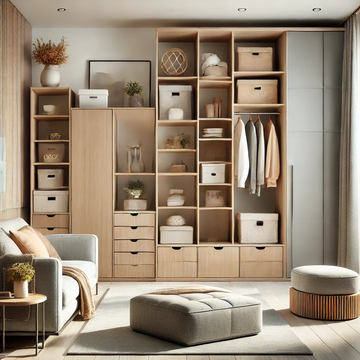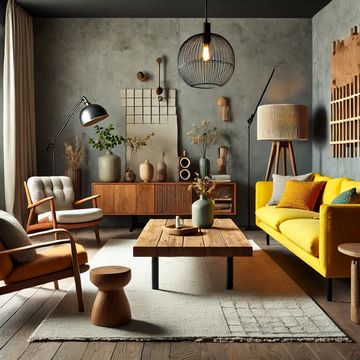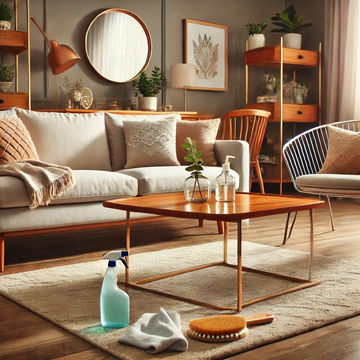Why Quality Art Supplies Matter
Let’s be honest—there’s nothing worse than starting a new art project only to find that your materials just aren’t up to scratch. Whether it’s a brush that sheds bristles or paint that doesn’t blend right, the wrong supplies can be frustrating and hold you back creatively. On the other hand, the right materials can elevate your work and make the whole process more enjoyable. Imagine the difference between a sketch on flimsy paper and one on a smooth, heavyweight sheet. It’s like night and day, isn’t it?
That’s why we’ve put together this guide to help you navigate the world of art supplies. Whether you’re just starting out or looking to upgrade your toolkit, we’ll help you find the best materials for your specific needs. Ready to take your art to the next level?
Understanding Different Art Mediums
Before you head out (or online) to stock up, it’s important to understand the different mediums available and what each one requires in terms of supplies.
Drawing and Sketching
- Pencils (Graphite, Charcoal, Coloured): The backbone of any artist’s kit. Graphite pencils come in a range of hardness for different effects, while charcoal offers rich, dark lines. Coloured pencils are great for adding depth and variety to your drawings.
- Paper Types (Sketch Pads, Drawing Paper): Not all paper is created equal. For rough sketches, a basic sketch pad is fine, but for more detailed work, you’ll want to invest in higher-quality drawing paper.
- Erasers and Blending Tools: A good eraser can be as important as your pencils. Kneaded erasers are perfect for lightening areas without leaving residue, and blending stumps help create smooth transitions between shades.
Painting
- Acrylics: Fast-drying and versatile, acrylics are a favourite for both beginners and professionals. They’re easy to use and can be applied thickly or thinly, depending on your preference.
- Watercolours: Known for their transparency and fluidity, watercolours are perfect for creating soft, layered effects. Make sure to use watercolour paper, which is specifically designed to handle the medium.
- Oils: The go-to for rich textures and vibrant colours, oils take longer to dry, giving you plenty of time to work with them. They do require more care in handling and cleanup, though.
- Brushes and Palette Knives: The tools you use to apply your paint are just as important as the paint itself. Different brushes create different effects, and a good palette knife is essential for mixing and applying thick layers.
- Canvases and Painting Surfaces: For acrylics and oils, a quality canvas is key. Watercolourists should opt for high-quality, heavy paper that won’t buckle under the wet paint.
Mixed Media
- Combining Different Mediums: If you like to mix things up, you’ll need supplies that play well together. Think about how water-based and oil-based materials interact, and choose your combinations accordingly.
- Essential Tools (Gesso, Mediums, Fixatives): Gesso is a must for priming surfaces, mediums can alter the texture and drying time of your paints, and fixatives are essential for protecting finished works, especially when using charcoal or pastels.
Digital Art
- Tablets and Styluses: Digital art requires a different set of tools altogether. A good tablet and stylus combo will give you the precision and control you need to create detailed work.
- Software Recommendations: Whether you’re using Adobe Photoshop, Procreate, or another program, make sure your software is up to the task. Each has its strengths, so choose one that fits your style.
- Printing Materials: If you plan to print your digital work, invest in quality paper and ink. The right materials can make all the difference in how your work looks on the wall.
How to Choose the Right Art Supplies
Choosing the right supplies isn’t just about grabbing the most expensive items on the shelf. It’s about finding what works for you and your art.
Matching Supplies to Your Skill Level
- Beginners: When you’re just starting out, it’s tempting to go all-in on top-tier materials. But sometimes, it’s better to start with affordable, easy-to-use options that let you experiment without fear of wasting expensive products.
- Intermediate: As your skills develop, you’ll want to start investing in higher-quality materials that allow for more precision and control.
- Advanced: Once you’ve honed your craft, professional-grade supplies are worth the investment. They offer durability, consistency, and a level of quality that cheaper materials just can’t match.
Balancing Quality and Budget
Not every supply needs to be top-of-the-line. Knowing where to invest and where to save can help you stretch your budget without sacrificing your art. For example, splurging on a good set of brushes might be worth it, while you can often find decent sketchbooks for a reasonable price.
Experimenting with Different Brands
Every artist has their preferred brands, and finding yours might take some trial and error. Don’t be afraid to experiment with different options to see what feels right for your style. You might find that a lesser-known brand offers just what you’re looking for at a fraction of the cost.
Essential Art Supplies for Specific Art Forms
Depending on what kind of art you’re into, your supply list will vary. Here’s a quick guide to the basics for different art forms.
Drawing and Illustration
For drawing and illustration, you’ll need a range of pencils, high-quality paper, and a good eraser. Illustration might also call for fine liners or ink pens for crisp, detailed lines.
Painting
Whether you’re into abstract, realism, or landscapes, you’ll need paints, brushes, and the right surface. Acrylic painters should consider a range of brushes and canvases, while watercolourists might focus on quality paper and water-resistant brushes.
Printmaking
Printmaking requires specialised tools like linocut knives, brayers, and ink. If you’re into screen printing, you’ll need screens, squeegees, and fabric or paper to print on.
Sculpture and 3D Art
For sculptors, tools vary depending on the medium. Clay requires modelling tools and a kiln (if you’re firing it), while wire sculpture needs pliers and cutters. Don’t forget to consider storage for your tools and work-in-progress pieces.
Caring for Your Art Supplies
Once you’ve invested in quality supplies, you’ll want to make sure they last.
Proper Storage
Store your brushes upright or in a roll to keep the bristles in shape, and keep your paints sealed tightly to prevent drying out. Paper should be stored flat and away from direct sunlight to avoid yellowing.
Cleaning Techniques
Clean your brushes thoroughly after each use—especially if you’re working with oil paints. Warm water and soap work well for water-based paints, while solvents are needed for oils. Keeping your tools clean not only extends their life but also ensures they perform their best.
Organising Your Workspace
A tidy workspace is a productive workspace. Keep your supplies organised in drawers, boxes, or on shelves where you can easily find what you need. Label everything to save time searching for that one elusive item during a creative session.
Where to Buy Art Supplies
Finding the right place to buy your supplies is just as important as knowing what to buy.
Online vs. In-Store
Shopping online offers convenience and often better prices, but buying in-store allows you to see and feel the products before you purchase. It’s worth exploring both options to see what works best for you.
Trusted Brands and Retailers
Some brands have earned their reputation for a reason. Look for trusted names that artists rely on for consistency and quality. Whether it’s Winsor & Newton for paints or Faber-Castell for pencils, these brands are often worth the investment.
Budget-Friendly Options
If you’re on a budget, don’t worry—there are plenty of ways to save. Keep an eye out for sales, buy in bulk, or look for starter sets that offer a range of materials at a discounted price. Even on a tight budget, you can find quality supplies that meet your needs.
Ready to Choose Your Art Supplies?
So, there you have it—a complete guide to finding the best materials for your creative projects. Whether you’re sketching, painting, sculpting, or creating digitally, the right supplies can make all the difference in your work. Now, it’s time to gather your materials and let your creativity flow. After all, great art starts with great tools!




